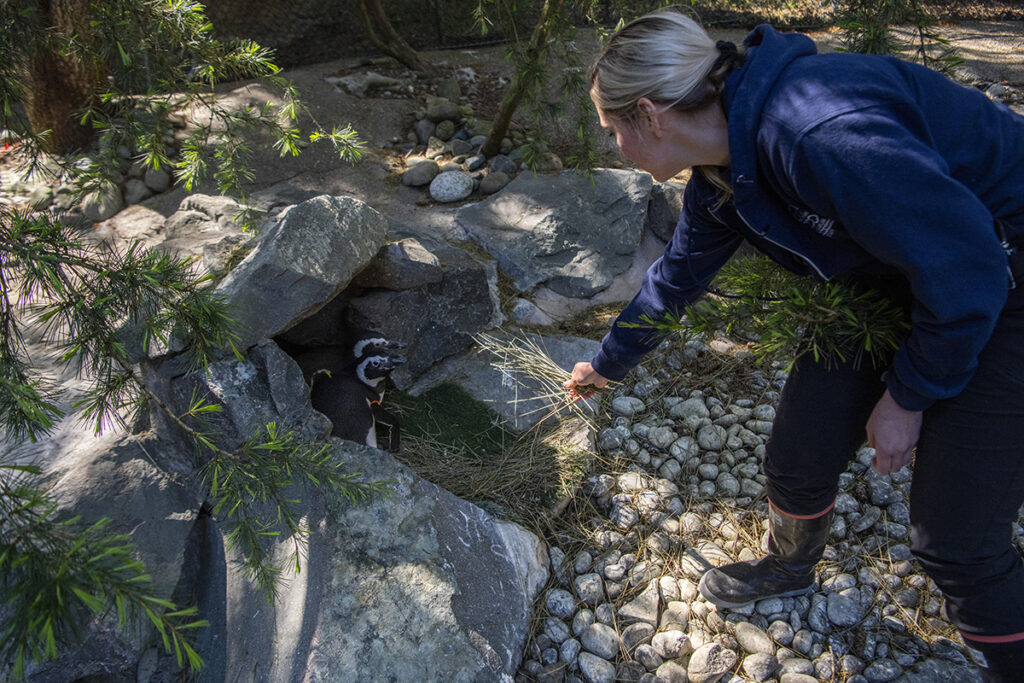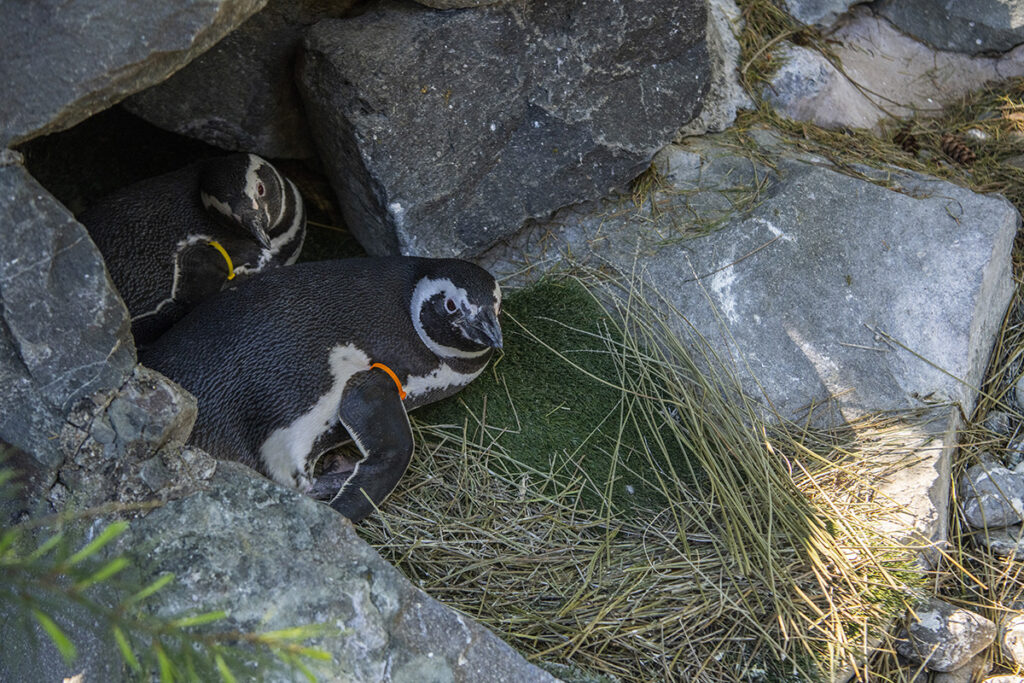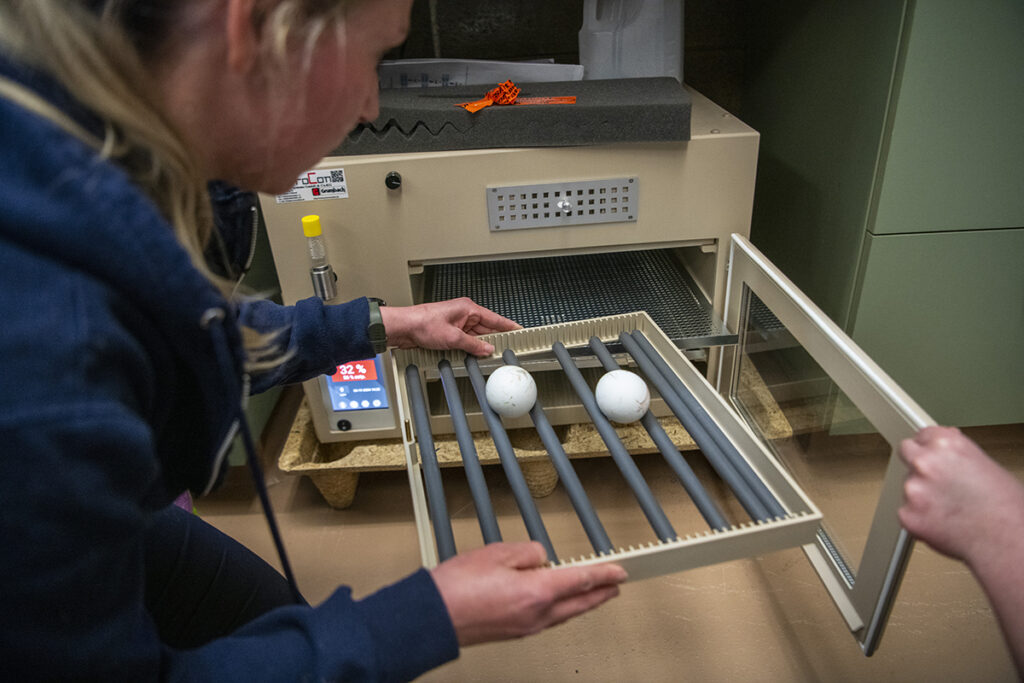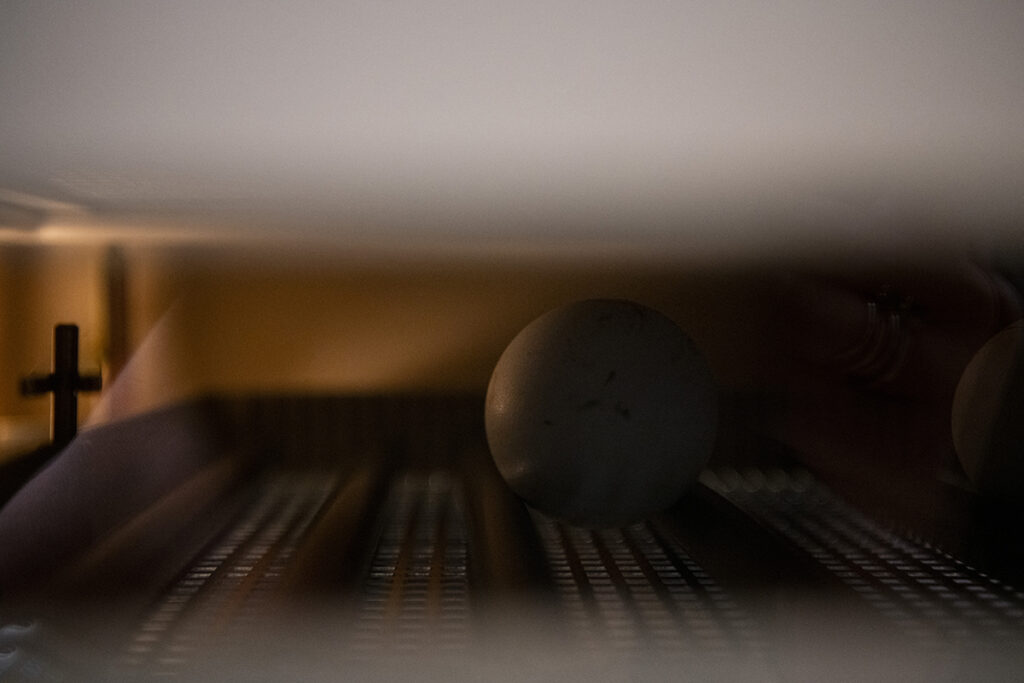It’s that time of year again! Our Magellanic penguins have found their mates and are in the middle of nesting season. Earlier this month, keepers observed our penguin pairs snuggling in their nests. It wasn’t much longer before we saw the eggs being kept warm.
Each year, keepers prepare Penguin Point for nesting season. They add long grasses throughout their habitat so pairs can begin gathering materials and building their nests. This year, keepers added a new nesting material: lavender.
“Lavender has antibacterial properties that make a cleaner nest and more sterile environment for chicks,” explained the zoo’s Marine Mammals and Birds Curator Jen. “The lavender has proved to be very popular among the penguins!”
On one sunny April day, guests gathered around and watched as keepers entered the penguin habitat with more lavender. One penguin from each pair quickly left their nest and surrounded the keepers, excitedly grabbing lavender and hurriedly taking it back to their partner.
The zoo’s participation in the Association of Zoos & Aquariums’ Species Survival Plan® (SSP) managed breeding program for Magellanic penguins makes the hatching of penguin chicks possible. Three penguin pairs are recommended to breed, and they have laid genetically valuable eggs, a good sign for chicks later this spring.
Guests will notice two penguins who may be exploring independently. Rio and Regina are the zoo’s younger penguins, still too young to nest.
For the penguins with eggs, the attentive parents take turns incubating the eggs to keep them warm and switch off every few days. Each penguin parent has a bare patch on their lower abdomen called a brood patch that allows their body heat to help keep the eggs warm.
If the incubation is successful, chicks will hatch by May to early June. It takes around 38-42 days for the eggs to hatch. New chicks in our penguin colony would make this the eighth consecutive year of hatchings!
One pair, named Purple & White from their colored ID bands, will receive extra help from keepers this year.
“Purple and White have laid eggs in the past but have never successfully had a chick that survived,” said Jen. “We are artificially incubating their eggs and will replace them under the pair right before hatching time to see if this gives the eggs a better chance of survival.”
The eggs are in an incubator inside the zoo’s healthcare building, where they stay at a comfortable 97.8 degrees Fahrenheit and 56% humidity. Keepers will check on the eggs daily.
In the meantime, keepers have placed “dummy eggs” in Purple and White’s nest so they can continue bonding and nesting.
Typically, the penguins have the same mate each nesting season. Males attract mates by “braying” like donkeys; when a female responds, he walks around her in a circle, patting her with his flippers. Mated pairs will also hit their bill tips together to bond. In addition to Purple and White, the other pairs with genetically valuable eggs are Pink and Red and Orange and Yellow.
Once chicks arrive, they’ll be hidden for their first few weeks, keeping warm and safe beneath their parents. The chicks will periodically emerge for feedings when the parents give them a “seafood slushie” (regurgitated fish) they’ve already eaten.
Magellanic penguins are native to the South American shores of Argentina, Chile, Uruguay, and Brazil. Several factors threaten them in the wild, including the proliferation of plastics in the ocean, spills of oil and other hazardous materials, and overfishing.



